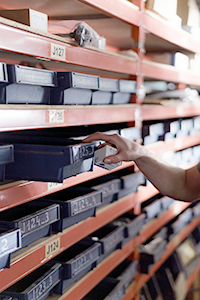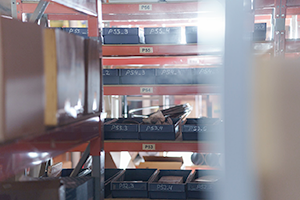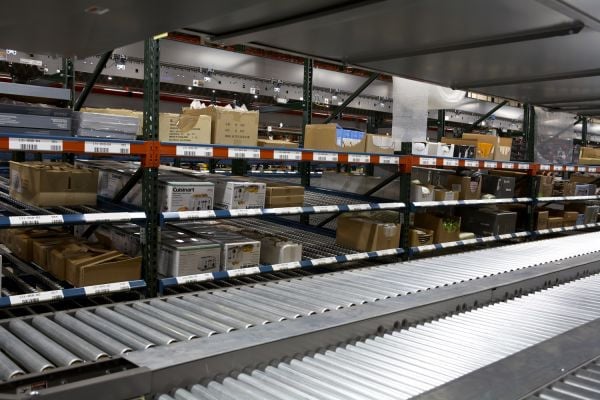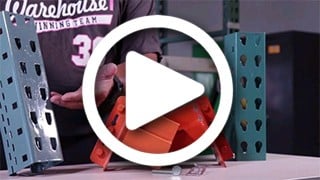How to Improve Order Picking Accuracy in Your Warehouse
Reliable order fulfillment centers around effective picking. While this practice has evolved considerably over the years, its basis remains the same as ever: manually selecting items ordered by customers. This may seem simple, but today's extensive inventory and heightened consumer demands leave absolutely no room for error. As such, every aspect of picking must be optimized.
Without exceptional picking accuracy, your business risks reduced customer satisfaction, not to mention the considerable cost of return material authorizations (RMAs). 100 percent fulfillment accuracy is always the goal, but every business is bound to fall short. Commonly cited industry averages of 1-3 percent accuracy errors result in far too many dissatisfied consumers. No single method will guarantee lower error rates, but a layered solution can promote both accuracy and efficiency.
5 Order Picking Strategies For Boosting Warehouse Accuracy
Here are five effective ways to increase picking accuracy:
1. Organize Your Warehouse For Success
 Layout and design rest at the heart of any effective warehouse picking operation. Automated solutions will have a limited impact if your layout is confusing or your space is prone to traffic jams.
Layout and design rest at the heart of any effective warehouse picking operation. Automated solutions will have a limited impact if your layout is confusing or your space is prone to traffic jams.
At minimum, slotting should be implemented to streamline inventory management. This involves determining which products sell most quickly — and which locations are equipped to move these items efficiently.
Remember: warehouse pickers should not need to travel the entire length of your facility to find items. Their fast pace simply cannot compensate for poorly-located items. If a problematic layout forces them to criss-cross the entire warehouse, accuracy is almost certain to suffer. By keeping inventory within a specific slotting area — and by placing fast-moving products within the most accessible racks — you can dramatically reduce travel time while keeping pickers focused and confident.
Even if you don't pursue slotting as an overarching solution, you can still integrate elements of this strategy where it's most convenient or useful. For example, similar items can still be grouped together on a smaller scale. Sometimes referred to as zoning, this strategy may involve assigning pickers to specific zones or establishing hot zones that maintain the highest pick density.
2. Maintain Accurate Inventory
 If pickers are consistently sent towards items that are out of stock, it's time to take a closer look at your labeling practices. Pickers need to feel confident that all inventory data is accurate. A solid labeling setup can make a world of difference. Both racks and individual products should be easily identifiable.
If pickers are consistently sent towards items that are out of stock, it's time to take a closer look at your labeling practices. Pickers need to feel confident that all inventory data is accurate. A solid labeling setup can make a world of difference. Both racks and individual products should be easily identifiable.
Creative solutions that simplify picking are always welcome. For example, long, difficult-to-read SKU numbers can be replaced by simple pictures. These provide an instant indication as to which items pickers should retrieve.
Many warehousing operations now rely on automatic labeling systems, which limit the potential for human error and can even provide real-time inventory control. With or without automation, detailed diagrams indicating proper label placement are essential. Pick-to-label strategies may be worth exploring for full-case picking — particularly in facilities with high order volumes.
3. Incentivize Accuracy
 In the past, picking speed was often emphasized at the cost of accuracy. Both are possible, but you'll need to reinforce that accuracy is a priority. This can be accomplished by carefully tracking error data. Determine which pickers or teams are most accurate over time. Reward them periodically with monetary bonuses.
In the past, picking speed was often emphasized at the cost of accuracy. Both are possible, but you'll need to reinforce that accuracy is a priority. This can be accomplished by carefully tracking error data. Determine which pickers or teams are most accurate over time. Reward them periodically with monetary bonuses.
In addition to promoting accuracy, error data can provide powerful insight into systematic concerns that limit accuracy across the board. Be sure to follow up on any large-scale patterns you observe; you may be surprised to discover that small changes can produce major improvements in picking accuracy.
4. Use Technology To Help With The Picking Process
These days, technology can be built into every aspect of warehouse picking. Automated systems dramatically improve efficiency while making employees' lives easier. While no tech solution will be helpful for every facility, these options are definitely worth exploring:
 Handheld or wearable barcode scanners. With the wrong tools, scanning can be a cumbersome process that slows down otherwise efficient picking operations. Radio frequency (RF) scanning draws on the power of the modern warehouse management system (WMS) to help pickers confirm tasks and provide consistent updates. Whether you opt for handheld or wearable devices, confirm that scanners operate quickly and stop rarely.
Handheld or wearable barcode scanners. With the wrong tools, scanning can be a cumbersome process that slows down otherwise efficient picking operations. Radio frequency (RF) scanning draws on the power of the modern warehouse management system (WMS) to help pickers confirm tasks and provide consistent updates. Whether you opt for handheld or wearable devices, confirm that scanners operate quickly and stop rarely.- Voice picking. If employees are equipped with headsets, they can function "head up, hands free" and avoid several common sources of distraction. Typically, voice systems involve verbal confirmations of locations, bins, or quantity. While moving between picking locations, these systems provide optimized instructions to limit worker strain and avoid traffic jams.
- Conveyor systems. Versatile conveyor systems increase throughput without harming accuracy. Sortation conveyors, in particular, are helpful for picking operations. These systems can identify various items on conveyors and direct them to the proper locations. Many facilities will also benefit from motor driven roller (MDR) conveyors, which limit accumulation and optimize small spaces.
5. Look to Automations to Improve Efficiency
Today's automated systems build on the hard work of committed employees. While we've already highlighted a few helpful tech solutions that are easy to implement, some may call for an overhaul of your current operation. These overarching solutions take more effort to implement, but the payoff could be considerable.
 The most relevant example? Pick module systems, which feature several levels and customizable storage solutions. These versatile systems are integral to maintaining high-volume workflows. With these setups, conveyors run through multi-level racking structures to streamline the flow of products. Shelving-based modules may be preferable for high SKUs, especially when small parts or piece-pick solutions are required.
The most relevant example? Pick module systems, which feature several levels and customizable storage solutions. These versatile systems are integral to maintaining high-volume workflows. With these setups, conveyors run through multi-level racking structures to streamline the flow of products. Shelving-based modules may be preferable for high SKUs, especially when small parts or piece-pick solutions are required.
Depending on the size and layout of your facility, automated storage and retrieval (ASRS) may also prove beneficial. This works well for goods-to-order picking systems, in which employees need not physically move between product locations. Instead, ASRS cranes, autonomous mobile robots (AMRs), or vertical lift modules (VLMs) deliver stock directly to employees placed at pick and pack stations.
Level Up Order Picking Accuracy With Warehouse1
At Warehouse1, we offer targeted solutions that improve order picking accuracy without compromising efficiency. We'll work closely with you to identify key objectives and pain points. From there, we can help you craft optimized, tech-oriented solutions that deliver an impressive return on investment. We'd love to get you scheduled for a consultation so you can learn more about our customized solutions. Contact us today to get started.



